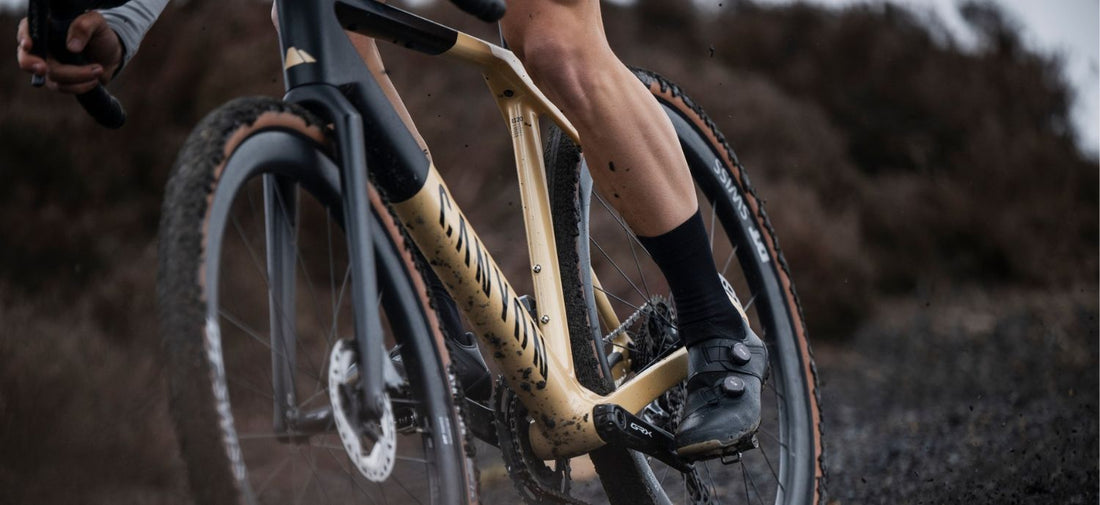
Knee Pain After Cycling
Knee pain after cycling is a common issue that affects beginners and experienced riders alike. Whether you're feeling a dull ache or sharp discomfort, understanding the causes and fixes can help you keep riding pain-free. In this post, we'll explore why cyclists experience knee pain and how to prevent it.
Why Do Cyclists Get Knee Pain?
Knee pain is a frequent complaint among cyclists, often stemming from improper bike setup, overuse, or biomechanical issues. Identifying the root cause is key to finding relief and preventing further injury.
Common symptoms: dull ache, stiffness, or sharp pain
Cyclists may experience a range of symptoms, including a dull ache, stiffness, or sharp pain in the knee. These sensations can occur during or after a ride, often worsening with prolonged cycling or intense efforts. Pain may feel localized or radiate, depending on the underlying issue.
Front, outer, or inner knee pain depending on the cause
The location of knee pain can provide clues about its cause:
- Front knee pain: Often linked to patellofemoral pain syndrome, caused by improper saddle height or excessive pressure on the kneecap.
- Outer knee pain: Commonly associated with iliotibial band (ITB) syndrome, often due to poor cleat alignment or tight hip muscles.
- Inner knee pain: May result from medial collateral ligament strain or improper foot positioning on the pedals.
Main Causes of Knee Pain in Cycling
Several factors contribute to knee pain in cyclists, ranging from bike fit issues to physical limitations. Here are the primary culprits:
Incorrect saddle height or cleat position
An improperly adjusted saddle height can place undue stress on the knees. A saddle that's too low forces the knee to bend excessively, while a saddle that's too high overextends the joint, leading to strain. Similarly, poorly positioned cleats can misalign the knee during pedaling, causing discomfort or injury.
Overuse, poor pedaling form, and weak stabilizers
Overuse injuries occur when cyclists push beyond their limits without adequate recovery. Poor pedaling technique, such as mashing the pedals or using improper gearing, increases stress on the knees. Weak stabilizing muscles, like the quadriceps, hamstrings, or glutes, can also fail to support the knee joint, leading to pain.
Misalignment of hips, knees, and feet
Biomechanical imbalances, such as misaligned hips, knees, or feet, can cause uneven force distribution during pedaling. For example, overpronation of the feet or tight hip flexors can pull the knee out of alignment, resulting in pain over time.

Quick Fixes for Knee Pain After a Ride
Addressing knee pain doesn't always require a complete overhaul of your cycling routine. Here are some actionable solutions to try:
Lower or raise your saddle for better joint angle
Adjusting your saddle height can significantly reduce knee strain. A general rule is to set the saddle so your knee has a slight bend (about 25–35 degrees) at the bottom of the pedal stroke. Use a bike fitting tool or consult a professional bike fitter to find your optimal saddle height.
Check cleat rotation and stance width
Ensure your cleats allow for natural foot movement. Adjust the rotation to align with your foot's natural angle, and check that your stance width (the distance between your feet on the pedals) isn't too narrow or wide. A professional bike fit can help fine-tune cleat positioning for optimal knee alignment.
Long-Term Solutions to Stop Knee Pain
To prevent knee pain from recurring, adopt these long-term strategies that address both physical conditioning and bike setup:
Strengthen glutes, quads, and hamstrings evenly
Balanced strength in the glutes, quadriceps, and hamstrings stabilizes the knee joint and reduces strain during cycling. Incorporate exercises like squats, deadlifts, and single-leg lunges into your routine to build strength evenly across these muscle groups. Aim for 2–3 strength sessions per week to support your cycling performance.
Do mobility work for hips and ankles
Tight hips or stiff ankles can contribute to knee misalignment. Regular mobility exercises, such as hip flexor stretches, ankle circles, and foam rolling, improve joint flexibility and reduce stress on the knees. Yoga or dynamic stretching routines can also enhance overall mobility.
Get a proper bike fit tailored to your biomechanics
A professional bike fit analyzes your unique biomechanics to optimize your riding position. A fitter will adjust saddle height, handlebar reach, and cleat alignment to ensure your knees track properly and your body is balanced on the bike, minimizing the risk of injury.

Can Insoles Help With Cycling Knee Pain?
Insoles are a powerful tool for addressing knee pain by improving foot stability and alignment. Here’s how they help:
They correct foot angle and reduce knee stress
Insoles with proper support correct foot angles, preventing overpronation or supination that can misalign the knee. By stabilizing the foot, insoles reduce stress on the knee joint, alleviating pain during pedaling.
Support medial arch to align lower limb chain
A well-supported medial arch ensures the foot, ankle, knee, and hip stay in alignment. This proper lower limb chain alignment reduces compensatory movements that can lead to knee pain, especially during long rides.
Improve force distribution and pedaling efficiency
Insoles distribute pressure evenly across the foot, reducing hotspots and improving pedaling efficiency. This even force distribution minimizes strain on the knees and enhances power transfer to the pedals, making your rides smoother and less taxing.
Best Insoles to Prevent Knee Pain
Choosing the right insoles can make a significant difference in preventing knee pain. SOLESTAR BLK and KONTROL insoles, available at solestar.com, are top choices for cyclists due to their advanced design and proven effectiveness.
What to look for: stability, alignment, arch support
When selecting insoles, prioritize stability, alignment, and arch support. A rigid base prevents foot collapse, while proper arch support aligns the foot and lower limb. Insoles should also fit snugly in your cycling shoes without adding bulk.
Note: Look for durable materials like carbon fiber or fiberglass for long-lasting performance.
How Solestar insoles improve knee tracking and comfort
1.- Solestar BLK: Designed for competitive cyclists, Solestar BLK insoles feature a 100% carbon fiber core for maximum stiffness and lightweight support. Their patented Stabilization Delta holds the foot in the Optimal Neutral Position, ensuring proper knee tracking and reducing stress on joints. Users report significant knee pain relief and a 6.9% average power output increase, as validated by scientific studies in Germany. These insoles are ideal for road, MTB, and triathlon cycling, offering unmatched stability and durability.

2.- Solestar KONTROL: Tailored for performance cyclists, Solestar KONTROL insoles use a fiberglass core for a balance of stability and slight flexibility. They provide excellent support and comfort, reducing knee pain by stabilizing the foot and promoting proper alignment. The KONTROL insoles are versatile, working with any foot type (flat, splay, or hollow) and are particularly effective for preventing overuse injuries like knee and back pain. They’re a great upgrade for any cycling shoe, enhancing power transfer and comfort.

Both Solestar BLK and KONTROL insoles are designed and manufactured in Germany, with a focus on biomechanics to minimize injury risk and enhance performance. Their unique construction ensures long-term durability, and they come with a 6-week satisfaction guarantee, allowing you to test them risk-free. Cyclists, including professionals like André Greipel, praise these insoles for reducing knee niggles and improving pedaling efficiency.
When to Seek Professional Help
If knee pain persists despite adjustments, consult a sports medicine professional or physical therapist. They can assess for underlying issues like tendonitis, meniscus injuries, or biomechanical imbalances that may require targeted treatment.
Conclusion
Knee pain after cycling is common but manageable with the right approach. By addressing bike fit issues, improving pedaling technique, and strengthening supporting muscles, you can enjoy pain-free rides. Make small adjustments, listen to your body, and seek professional guidance if needed to keep cycling comfortably.
If you have questions, you can contact us at: info@solestar.com

